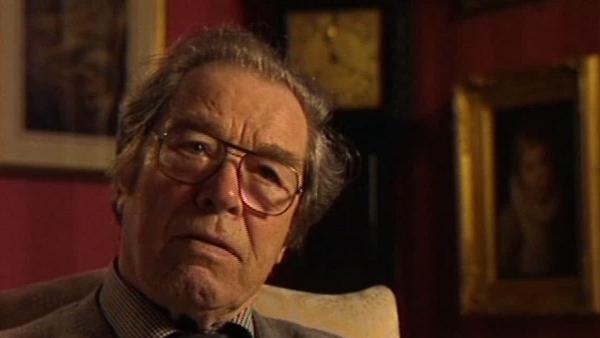NEXT STORY

The co-axial escapement was a superlative timekeeper
RELATED STORIES

NEXT STORY

The co-axial escapement was a superlative timekeeper
RELATED STORIES


|
Views | Duration | |
|---|---|---|---|
| 41. Each Daniels watch is different | 1 | 1719 | 02:06 |
| 42. Handmade repeater mechanisms | 1624 | 00:51 | |
| 43. I kept some of my best watches to amuse me | 1748 | 03:06 | |
| 44. My struggles to get the Swiss watch industry interested | 2036 | 02:50 | |
| 45. The co-axial escapement was a superlative timekeeper | 1977 | 02:40 | |
| 46. The difference between lever and co-axial escapement | 4625 | 01:46 | |
| 47. Who would produce the co-axial escapement for me? | 1904 | 01:31 | |
| 48. Persuading Omega to take an interest in the co-axial escapement | 1 | 2562 | 05:23 |
| 49. Putting on a show at the Baselworld Fair | 1627 | 00:56 | |
| 50. Patek Philippe produce a poor replica of the co-axial escapement | 2435 | 02:43 |


While I was making the 30 and more handmade watches, I was also working on prototype watches of my own design in the hope that I could persuade someone to take up the design of the co-axial and I wasn't very much encouraged by what happened. For example, I first went to Switzerland with drawings and I went to the biggest escapement company in Switzerland... in the world, and showed them my drawings and they said you know... well, here is a problem and there is a problem and this isn't right and that's not going to do... and they clearly weren't very interested. But the works foreman was interested and he said oh yes, he liked it very much and if I gave him an order for several million he'd do it. So that wasn't any good to me and so I went home and I made a watch with the escapement in, thinking that that might persuade him to take a more practical interest in it. And so I took this watch, which was quite a large watch, but then I was interested in precision timekeeping, I wasn't interested in little flat thin luxury watches, I was interested in proper watches, like the watch they used on the moon, that kind of thing. And so my watch was bulky like those moon watches... original movement, and they said no, no, no... well you know that's... I beg your pardon, I made a pocket watch before that. Yes, I made a pocket watch and took that, and they said that they didn't make pocket watches, they made wristwatches. So I went and made the wristwatch and took it back and they said well you know, we don't make thick watches we make thin watches. And so I gave up and started looking further afield and then I got involved with Patek Phillipe. And Philippe Stern, the proprietor of Patek Phillipe, for whom I have a great admiration, he's a marvellous businessman and very astute in horology, he was interested and he wanted his men to do it but they more or less didn't try very hard and so it failed.
George Daniels, CBE, DSc, FBHI, FSA (19 August 1926 - 21 October 2011) was an English watchmaker most famous for creating the co-axial escapement. Daniels was one of the few modern watchmakers who could create a complete watch by hand, including the case and dial. He was a former Master of the Clockmakers' Company of London and had been awarded their Gold Medal, a rare honour, as well as the Gold Medal of the British Horological Institute, the Gold Medal of the City of London and the Kullberg Medal of the Stockholm Watchmakers’ Guild.
Title: My struggles to get the Swiss watch industry interested
Listeners: Roger Smith
Roger Smith was born in 1970 in Bolton, Lancashire. He began training as a watchmaker at the age of 16 at the Manchester School of Horology and in 1989 won the British Horological Institute Bronze Medal. His first hand made watch, made between 1991 and 1998, was inspired by George Daniels' book "Watchmaking" and was created while Smith was working as a self-employed watch repairer and maker. His second was made after he had shown Dr Daniels the first, and in 1998 Daniels invited him to work with him on the creation of the 'Millennium Watches', a series of hand made wrist watches using the Daniels co-axial escapement produced by Omega. Roger Smith now lives and works on the Isle of Man, and is considered the finest watchmaker of his generation.
Tags: Patek Philippe SA, co-axial escapement, Philippe Stern
Duration: 2 minutes, 51 seconds
Date story recorded: May 2003
Date story went live: 24 January 2008